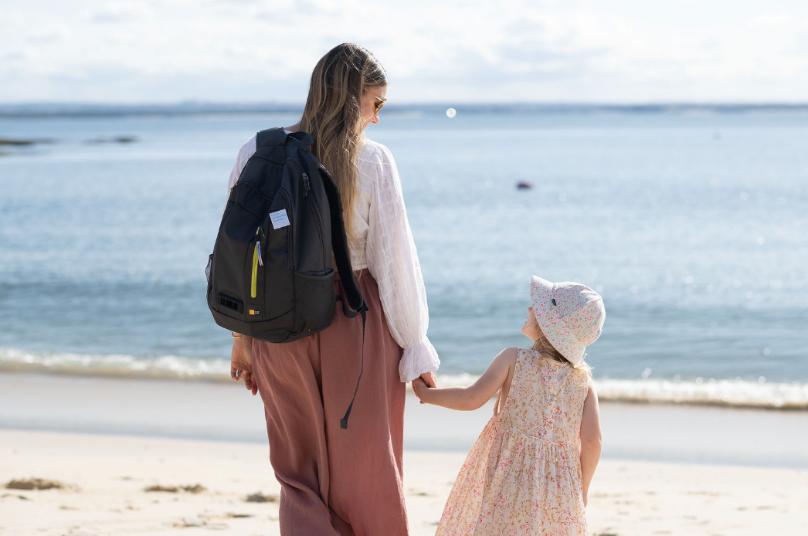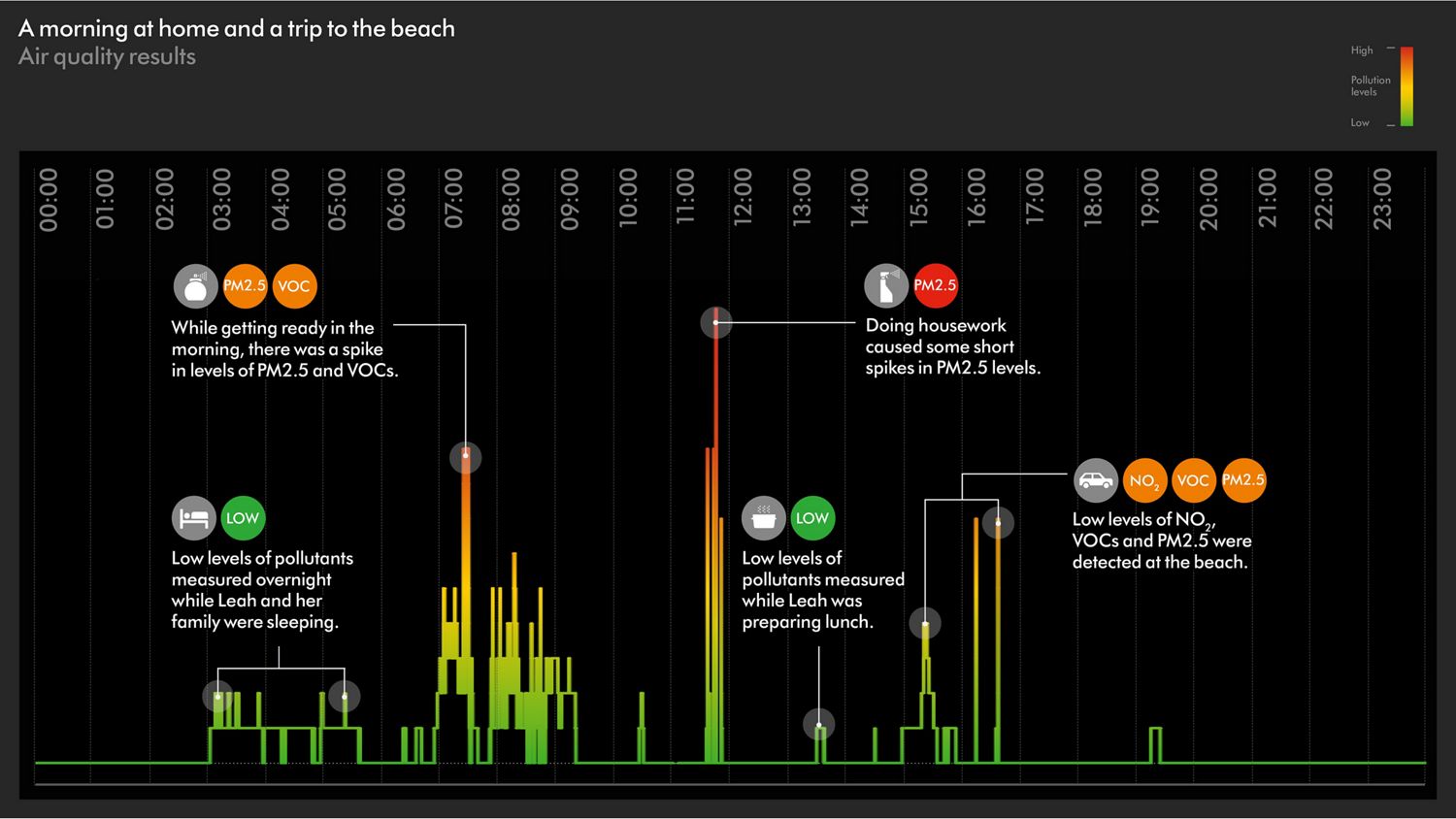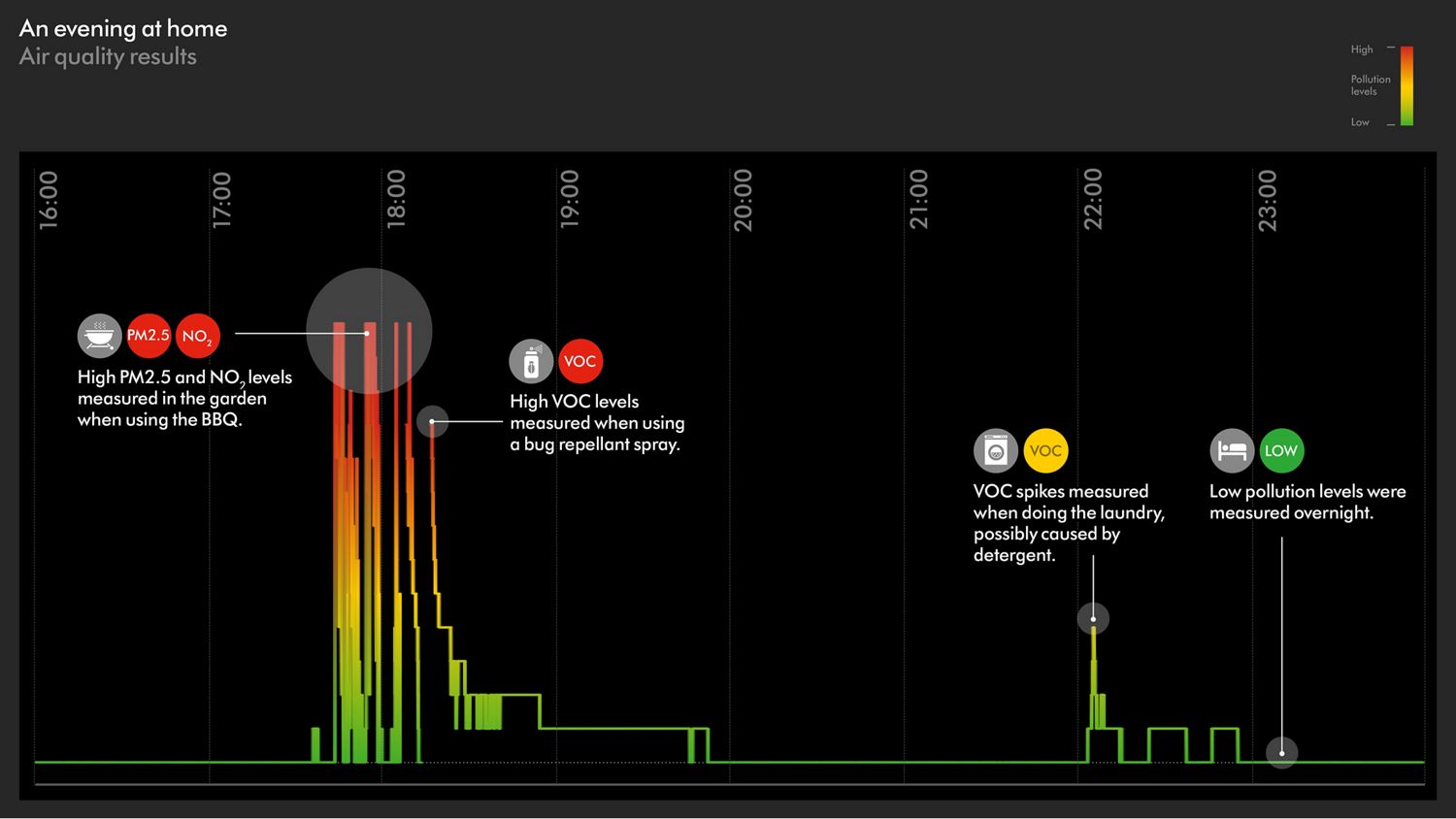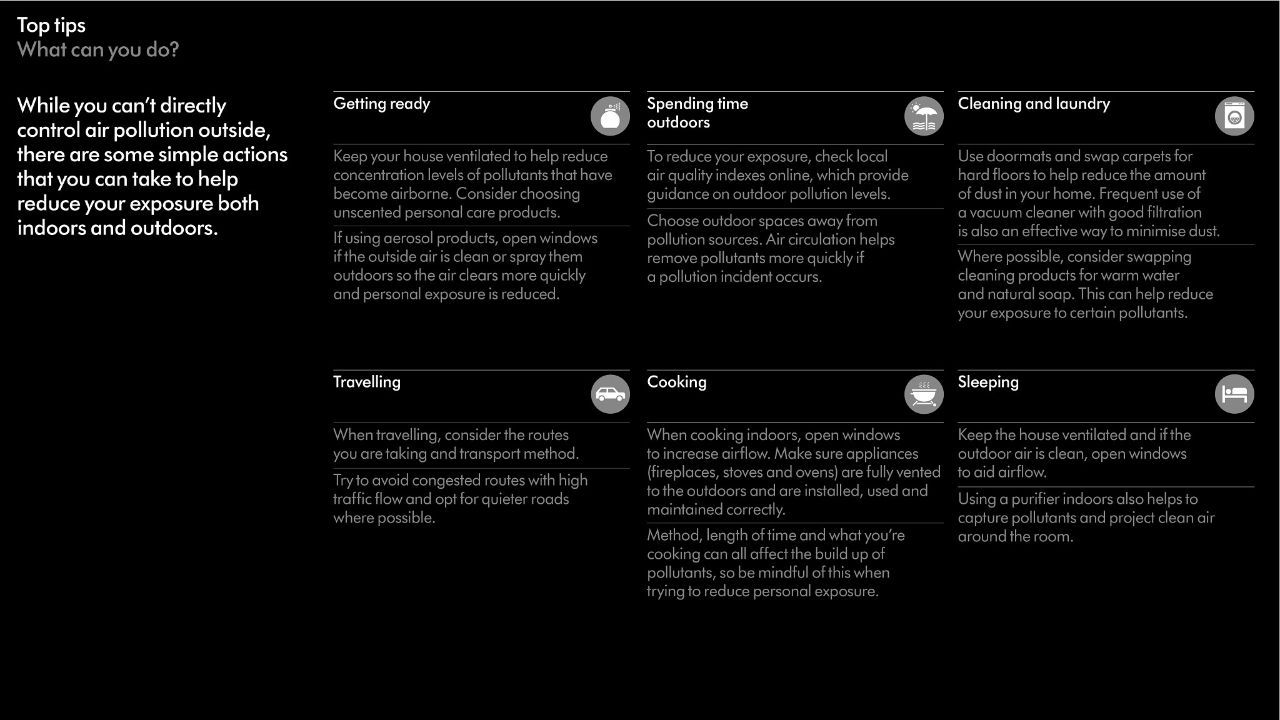Daily air diet: measuring a mother’s exposure to air pollution
From cooking and cleaning to a trip to the beach, Dyson’s air quality backpack tracks air pollution exposure throughout the daily routine of Australian Instagram influencer Leah Williams. Leah is one of a group of volunteers and journalists across the globe who are working with Dyson to raise awareness about air pollution in cities across the world.
31 July 2020
-

-
The quality of air we breathe is a critical concern, particularly for Leah, a busy mother based in Australia’s biggest city. The Sydney air quality backpack project is part of our sustained effort to enhance awareness about air quality issues in the Australian community and empower people to take control of their indoor air, following recent school education initiatives and donations to communities affected by bushfires.
By re-working existing sensing technology used in our air purifiers, we’ve engineered a prototype air quality backpack that acts as a portable air sensing device, collecting air pollution data on the move. Equipped with on-board sensors, a battery pack and GPS, the portable technology aims to provide an insight into personal exposure to air pollution and how to avoid it.
-
Feeding data back to Dyson engineers, the team analyse the findings by pairing the air sensor and GPS data from the backpack with Leah’s diary entries where she documents her daily activities. By understanding the events that cause air pollution in the first place, we’re better equipped to make recommendations on how people might be able to lower their exposure in the future.
-
The backpack
Our air quality backpack was initially developed by our engineers for the Breathe London study with King's College London and the Greater London Authority. The study involved 258 children in five schools in London, and sought to understand exposure to two pollutants, fine particulate matter (PM2.5) and nitrogen dioxide (NO2), on the school run. As a result of the study, 31 per cent of the children taking part said they would change the way they commute to and from school to reduce their exposure to air pollution.
“We are often exposed to many different types of air pollution, such as heavy traffic pollution and smoke from bushfires,” says Professor Sotiris Vardoulakis, from the Australian National University (ANU) Research School of Population Health. “The health effects of different air pollutants can depend on the individual. However, certain groups may be particularly sensitive to the effects of air pollutants including young children, pregnant women and the one in nine Australians who suffer from respiratory health conditions such as asthma, hay fever or bronchitis. So, understanding air quality is extremely important to decrease one’s own exposure to pollution.”
-
Increase in pollution levels during routine activities
Leah’s data findings showed an increase in pollution levels during routine activities such as cooking, cleaning and travelling by car. The data indicated that while overall exposure levels over the two-day period using the air quality backpack appear low, pollution events throughout the day caused pollution levels to spike into concentrations that register as ‘high’ on the Dyson purifier pollution scale.
An evening BBQ in Leah’s garden showed high levels of pollutants PM2.5 and NO2, likely caused by the combustion process during cooking which can emit fine particulate matter. NO2, a pollutant often associated with vehicle emissions, was also detected when Leah took a trip to the beach in the car with her family while using the backpack.
Meanwhile, volatile organic compounds (VOCs) were detected when Leah was doing activities in the house such as using cosmetic products, doing laundry and spraying pesticides outdoors. VOCs is a collective term for thousands of different chemicals, many of which are found in common household items or products. Interestingly, while Leah was cleaning, levels of PM2.5 registered at higher concentrations, likely caused by the disturbance of household dust.
“Technology advancements in portable air quality monitoring devices is increasing and using these is critical for translating the research findings into better everyday practice to reduce air pollution, both to understand our personal exposure and what we generate as individuals,” adds Professor Vardoulakis.
“Education around the different types and source of air pollutants will help people adjust their behaviour – by taking actions such as avoiding busy highways, commuting to work differently, increasing ventilation when cooking, using more environmentally friendly cleaning products or using a purifier with a HEPA filter inside the home.”
Our work with Leah is the most recent example of Dyson’s efforts to better understand and educate about the effects of air pollution in the region, while empowering people to make positive change. In February 2020, Dyson donated over $600,000 worth of purifiers and vacuums to bushfire-impacted Australian communities. Within three weeks, 400 Dyson Pure Cool purifying fans were distributed to 88 schools across the Australian Capital Territory (ACT) in areas affected by bushfire smoke pollution. Alongside the donations, we’re hosting a national air quality initiative with Little Scientists Australia - a not-for-profit program for early childhood educators and teachers – and donating 100 purifying fans to early learning centers in Australia.
“Our engineers have developed intelligent sensors using knowledge derived from years of experience and research in air cleaning technology,” says Alex Knox, Vice President of Environmental Care at Dyson.
Making the most of our portable air quality sensor technology, we recently used the backpack to investigate the impact of the COVID-19 lockdown on air quality globally. Participants in cities across the world have been wearing the backpack during essential travel in this period and the data findings will be released in October.
“Using our unique algorithm to process detailed reports of air pollution exposure, this technology allows us to monitor air quality indoors, outdoors and on the move. What’s more, it all fits within a backpack,” adds Knox.
Press contacts
-
Liv Thomas
-







